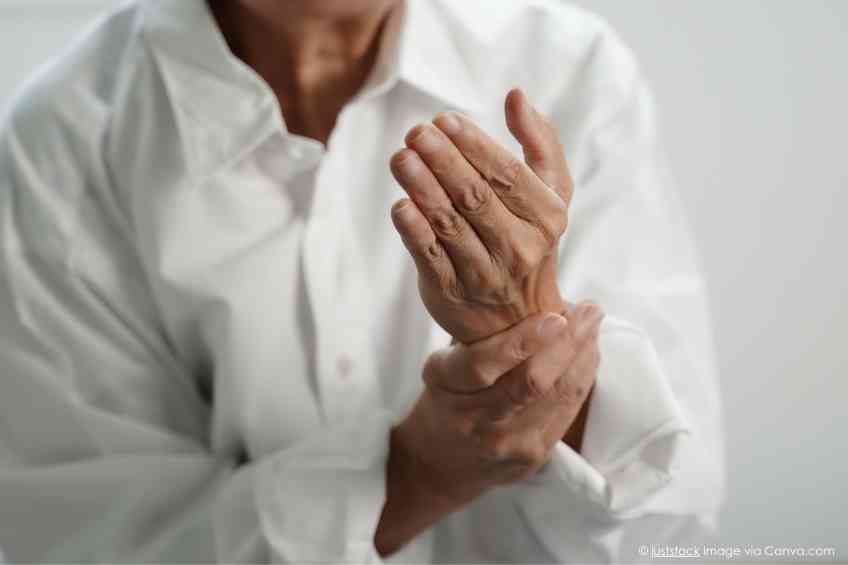Migraine sufferers are all around. There are tens of millions of those under attack in the U.S. alone. The number may even be rising thanks to various reasons. Making matters potentially worse, is that many may never have been formally diagnosed with the disorder. In effect, they suffer in painful silence. The operative word here is suffer. A migraine is not a normal tension headache. They are debilitating attacks that can lead to days of dizziness, fatigue, vomiting and severe pain. The good news is that advances have been made to lessen the threat—in some cases even reducing the chances of getting hit with an attack altogether. There is also more understanding about what triggers these attacks and how those under threat can help themselves. Unfortunately, more work needs to be done on all levels. Angie Glasser knows all about migraine attacks. She has suffered from them since childhood and still remains under threat. She is also an author and public advocate dedicated to helping empower those who suffer. She spoke to WellWell recently about the progress that has been made to help battle back from migraine and what still needs to be done. Read on.
How many people suffer from migraine attacks?
Migraine is really common worldwide. It’s the second leading cause of disability among women ages 15 to 49, which includes me. I’ve been living with it since I was a young girl, so I have lots of experience. I have both a personal and professional relationship with it.
It’s the first leading cause of disability in the United States which translates to about 44 million people with migraine and it affects one in four households.
More and more people are getting diagnosed, but that doesn’t necessarily mean that more people have the condition, although some researchers do suspect that pollution and climate change might increase that global incidence over time. Some estimate that up to 50% of people with migraine actually have not been diagnosed. Migraine tends to run in families. And it’s stigmatized, so it’s not uncommon for somebody to watch their parent struggle through a migraine attack. They just take themselves out. They go lie down. They don’t talk to a doctor. They just make do. So then when they start experiencing migraine attacks themselves, they just cope with it the way that they’ve seen their parents. So, with less stigma comes more diagnosis, which we’re seeing.
What is a migraine and how does it differ from a headache? Is it just a more severe headache or is there something significantly different about a migraine?
A migraine is a complex neurological condition. It has a genetic basis that affects the way the brain interprets input from all five senses. During a migraine attack, which is a flare-up of this chronic condition, lights are brighter, sounds are louder, smells are stronger and movement is painful. People experiencing a migraine attack will tend to go into a quiet dark room because of the normal everyday stimuli—a light bulb, sunlight and someone speaking at regular volume gets interpreted in the brain as pain. And even though a migraine attack is invisible, if you were to get a functional MRI while you were experiencing one, they would be able to tell that the activity happening in your brain is not normal.
And how does this differ from just a headache?
One of the biggest misconceptions is that migraine is a headache. Head pain and neck pain during a migraine attack can be really severe, but those are not the only symptoms that cause disability. As I mentioned, the light sensitivity, sound sensitivity, smell sensitivity, vertigo, dizziness, fatigue, nausea and vomiting. Tinnitus’s cognitive effects like brain fog and difficulty concentrating are also common symptoms. Now. If you compare that with a tension headache, which is a very common type of headache, it is usually typically pretty mild and moderate, and it doesn’t typically affect someone’s functioning. But, 90 percent of people who have a migraine attack experience some kind of disability during that attack. Disability is not a bad word. It simply means that you’re unable to perform your usual work and life tasks.
And, unfortunately, a migraine attack can last a long time. There are four phases that your brain goes through during an attack. There’s a warning phase we call the prodrome, where people can experience cravings for salt and sugar or they’ll yawn a lot. They may even have to go to the bathroom more often. The second phase is called the aura phase. About one-third of the people with migraine experience aura. I’m one of those. The most common symptoms are visual disturbances, either like a blind spot in the middle of your vision, or you’ll see kind of a jagged line on the edge of your vision or flashing lights. The one that I experience most often is that everything looks kind of shimmery, kind of sparkly like I’d maybe have something in my eye – that’s the aura phase. The third phase is the headache phase or the pain phase. That’s where the worst of it happens. That’s where you’re really in it. But then we have a final phase called the postdrome phase, which we like to refer to as the migraine hangover. It does feel a little bit like an alcohol hangover, of course, without having fun. So, during that postdrome phase, the electrical and chemical storm that’s happening in your brain during a migraine attack, it’s still going, the pain is maybe teetering down a little bit, but people tend to feel just really worn out like they got hit by a bus. Fatigue and difficulty concentrating are really common. It can be really difficult to bounce back from a migraine attack, especially if it lasts 3 days. Compare that to a tension headache which is typically pretty mild and doesn’t interfere with your ability to function. a migraine attack is a neurological storm that affects the whole body.
Are there different types of migraine?
Yes. Like ice cream, migraine comes in lots of different flavors. The two main ones are migraine with aura and migraine without aura. As I mentioned, one-third of the people will experience aura symptoms. You don’t have to experience it with every attack, to have migraine aura. But they do experience it with some attacks. There are some rare types of migraine called hemiplegic migraine, which is a pretty rare sub-variant that has some kind of scary symptoms that can resemble a stroke. Tingling in the feet and sometimes one-sided weakness. And then vestibular migraine is another more common subtype. This type of migraine is characterized by dizziness and vertigo and sometimes people won’t have any kind of head pain at all with the vestibular migraine. So that’s another reason why migraine is not just a headache.
Who’s most susceptible to suffering a migraine? What are the other variants in terms of demographics we might look at?
Men, women and children all have migraine and it’s kind of interesting the prevalence of migraine among boys and girls is about the same. Until they hit puberty. Once they hit puberty, women are three times more likely to have migraine than men. They suspect that estrogen plays a really big role in this region. So, migraine is genetic, but it’s also influenced by environmental factors like hormones or stress. People who experience early life stress or ongoing trauma, they’re going to have a greater risk of developing migraine. In fact, veterans of the Iraq and Afghanistan wars have some of the highest incidences of migraine as a result of the physical trauma from concussions, but also the emotional stress that comes with being in active combat.
How do genetics play a role in this also?
Scientists have identified about 30 different gene mutations that can lead to migraine. But no two people with migraine have the exact same thing going on. For example, you may have a migraine gene where you experience some migraine attacks as a kid. Maybe you were not exposed to external environmental factors that would have kicked your migraine into a higher gear. So, you were kind of able to come back from it and it doesn’t affect your life too much. Now somebody who was born with that same gene and experiences these environmental factors, hormones or stress, that person may have more migraine symptoms in their lives. And the hormonal connection, once again, is another reason my migraine attacks didn’t get really bad until middle school. And that wasn’t until I hit puberty in middle school, which is common. Pregnancy and menopause are also life experiences that can trigger migraine attacks in somebody who has that genetic disposition.
Can migraine attacks lessen over time?
They can. If some folks have a strong hormonal connection and they hit menopause, their migraines may go away completely. Some people, however, find the opposite where menopause can trigger more migraine attacks, so it’s really difficult to predict how migraine is going to act in any given person and during any stage of their lives.
Is the number of migraine sufferers rising because the related stigma is reduced and people are more willing to talk about their issues along with better diagnostics?
Yes, absolutely. Primary care physicians are becoming more and more comfortable diagnosing and treating migraine, which is important because it is not difficult to diagnose. But as more people feel less stigmatized, they see that they have options. Maybe they see a commercial on TV for a new medication that can be the catalyst that gets somebody into a doctor’s office to get that initial diagnosis.
What are the dangers associated with migraine? Are there risks that can lead to other medical complications?
The biggest one is that people with migraine have a higher incidence of stroke and heart disease. If you have other risk factors for stroke and heart disease, it’s important to know if you also have migraine because that increases your incidence. There may be a connection between migraine and dementia, although there isn’t a lot of great evidence right now, that’s still pretty early. But the impact that it has on your life is probably the biggest risk associated with it.
Can you tell us how migraine has impacted your life and what your journey has been like?
I was diagnosed really young. When I hit middle school, that was the first time I got a migraine attack that lasted days. I missed about three days of school and I was just in a dark room for days. I went to a neurologist and they helped me get it under control. My migraine attacks were mostly controlled throughout high school. When I hit college, however, I started to get them more and more frequently. I saw a doctor. He got me on preventative medication. I got it under control once again. And then a couple of years after I graduated from college, I entered the workforce. Over the course of the year, my migraine attacks went from maybe three per year to once a month and then twice a month and then three times a month. So, in a year, I declined pretty drastically. I was working as a park ranger actually in Yosemite National Park and I had to resign my job, unfortunately, because I just could not get out of bed. Eventually, I applied for Social Security disability insurance at the ripe old age of 24. So, that was my low point.
Though a huge lifeline for me during this time was the online community you mentioned that I have a blog I love to write, so that was cathartic for me to get my story out there and connect with other people. There are tons of people out there who deal with this. I have had some success with treatments. I’m a lot less disabled now. I have a full-time job. I’ve been able to go back to work, which is so huge. I do work from home, which is incredible. I have accommodations that make it so that I can work. But I’ve been on a bit of a roller coaster and my experience is not that uncommon. It’s pretty common for people to cycle back and forth with the different seasons of their lives.
When you were young, did your parents recognize you were suffering from migraine?
The very first attack that I had, I was three and a half. I had a terrible headache. I was crying, holding my head and then I vomited. But I did feel better. My dad gets migraine attacks, so my mom recognized that the headache plus vomiting equals migraine in most instances. So, I was able to get diagnosed early and I got some fairly good treatment from my physicians. Part of my downfall is that before 2018 there was only one class of medication that was used to treat an acute attack. There are actually two. But those just did not work for me, so I was in a holding pattern. I’d get an attack and I would just have to wait for it to go away. That right there is a huge risk factor for it turning into chronic migraine. It’s pretty important to treat those attacks as soon as you can.
What’s involved in terms of medical treatments for migraine?
Since 2018, we’ve seen some huge advancements in migraine treatment, but I want to back up a little bit and set the stage before 2018. Every person with migraine should have an acute medication or an acute treatment that they take when they get an attack. Most people with migraine, if experienced four or more migraine days a month, can benefit from prevention. Before 2018, all of the drugs that were used for migraine prevention were made for another condition, and then doctors noticed that they were helping people control their migraine almost on accident like beta blockers that lower your heart rate, antidepressants, anti-seizure meds and even Botox. These are all used to prevent migraine attacks now. In 2018, however, we saw the first migraine preventive medication that was made just for migraine. This drug hit the scene in 2018. It was called Aimovig. It was followed by three more medications in that same class—Galardi, Adjovi and Vietti. What makes these drugs kind of exciting for people with migraine is they’re super targeted. They’re created to act on a neuropeptide in the brain that’s called calcitonin. Gene-related peptide CGRP. It’s a bit of a mouthful. GCRP is one of the chemicals that’s involved in a migraine attack. If you take a blood test during a migraine attack you can see that you have elevated levels of CGRP. And because these are so targeted, they come with few side effects. So, people can tolerate them now, and since then we’ve seen even more CDRP drugs.
The second class has come out that we call the G pants. This includes Neurotech, Umbrella, VQ, Lipta and Zabuza spray. And even better, the FDA has also cleared a handful of neuromodulation devices. These are non-invasive devices that you put on your forehead, your head or your arm, and they use magnets or electricity to interfere with your nervous system. Very similar to a tens machine. And these are great because they don’t use medication so younger kids and adolescents can use them and you can also combine them with your medications to get more relief. So, we’re now seeing for the first time in history this menu of migraine options that were developed just for migraine that deliver spectacular results for some people. I am not the only person who was on Social Security disability and was able to go back to work. I know a handful of other folks in that same boat so these can be really life-changing. They don’t work for everyone however, but I want everyone to know that there is research in the works now looking at a different neuropeptide. We may see more treatments coming in the future. If you tried one of these drugs and they didn’t help you, maybe talk to your doctor about trying another one. But do not lose hope because we should see even more treatments coming on the scene.
Are we seeing more because more funding is going into it? Obviously, funding is always key with any issue.
Migraine research is unfortunately incredibly underfunded. However, the scientists who discovered CGRP, which I think was discovered in the 90s, found that it was part of the migraine they were working under the NIH. So, they were using federal research dollars to discover this mechanism. The first drugs they made that acted on CGRP had some liver issues. So basically, since the early 90s, they’ve been trying to formulate these drugs in a way that blocks CGRP but isn’t harmful. And around 2015, I believe is when they got to that third phase and that’s when pharmaceutical companies jumped in and were like, let’s take this to the next level. Let’s turn these into drugs.
Why is it so hard to develop preventative medicine?
Researchers are not incredibly confident about exactly what’s happening in your brain during a migraine attack. We know some things like there’s abnormal electrical activity and neuroinflammation, but it’s such a complicated process and it is different for everyone. As I mentioned before, unfortunately, a lack of funding in part because it was stigmatized and also because women suffer from it more. And of course, it’s not a fatal disease. Priority should rightly go to failed diseases. But a lack of research over decades has put us in a position where we’re a little bit behind on migraine treatments.
Why do you think that was? Was it because people didn’t talk about it a lot because it wasn’t a life-threatening disease?
I believe it has to do with stigma coming from both the patients and the doctors. So some people are reluctant to get a diagnosis and some people may go to their physician and get a misdiagnosis. That happened to me. I was misdiagnosed as having a sinus headache. So, there’s some stigma on the patient’s side, but there’s also stigma on the doctor’s side. I’ve heard of headache specialists being kind of denigrated among peers because they’ve chosen an unfancy. Specialty and that comes with the lack of research. The second issue now is that we don’t have a ton of researchers who have devoted their lives to studying this. They are there. But we’re just a little bit behind when it comes to that early-funded research.
What are the triggers of a migraine? Are there other lifestyle changes that someone can make to lessen the chances of getting a migraine?
Some of the risk factors for migraine are evolving. You can’t change being a woman, your genetic makeup or experiencing drama. But there are risk factors that you can control like not smoking and trying to keep a healthy weight if you have another condition along with migraine, anxiety, depression or sleep apnea. Managing that condition as best as you can is really helpful because those conditions tend to feed off of one another. One of the lifestyle strategies that I swear by is sleep hygiene. Your regular sleep is one of the most common universal triggers, broken sleep, not enough sleep. I am very conscious of my sleep habits. I try to go to bed around the same time every night and wake up around the same time every morning, even on the weekends, which isn’t that fun, but it helps me so that I don’t wake up with a migraine attack as often. And then when it comes to food and diet, some folks can identify a food trigger and they avoid it. And it helps them manage their condition. I have not been able to, I mean, except for maybe alcohol, but I haven’t found a real trigger. The most important thing with diet is to not go too long without eating, so you’re the migraine.
Do you have hopes for progress on a wide scale in terms of dealing with this in 5-10 years?
I do. I think there are a couple of ways this will go in the future so that we’ll have more treatment and greater access to the treatments that exist. These preventive medications have been out for several years. They work well for some folks, but some folks just don’t have access to them if they haven’t been diagnosed or if their physician doesn’t know about them. There’s a real push to increase the use of these and that comes with prevention. We’re trying to get people who live with a migraine to be proactive about prevention. It’s not that some of those preventive medications are a pill that you take every day, which some people may be a little wary about. But for chronic migraine sufferers, once that wildfire gets going and you’re experiencing symptoms going on 15 or more days each month, it’s so difficult to manage. So, you will need to be proactive about prevention, even if it’s just your sleep schedule or not drinking too much alcohol. Those kinds of things help make sure your condition doesn’t progress.
What’s the biggest misconception people have when they’re dealing with the issue of migraine attacks?
The biggest misconception about migraine is that it’s an inconvenience or an episodic issue that pops up. You take a couple of ibuprofen; you go about your day and everything’s fine. That is not true. Unfortunately, migraine is a chronic condition, even if you aren’t experiencing a migraine attack, you still have that disorder. Migraine attacks begin deep in the brain and some folks who have chronic migraine can experience symptoms all the time. So, the biggest misconception is that it’s merely an inconvenience or just a headache, whereas the impact that it has on people’s lives can be substantial.
About Angie Glaser
Angie Glaser is a senior digital producer and editor at Migraine Again, which is focused on empowering those who suffer from migraine attacks. She also produces her own blog, Chronic Migraine Life, and actively advocates for people with migraine and other headache disorders.
Please visit Angie Glaser’s Instagram to learn more.














